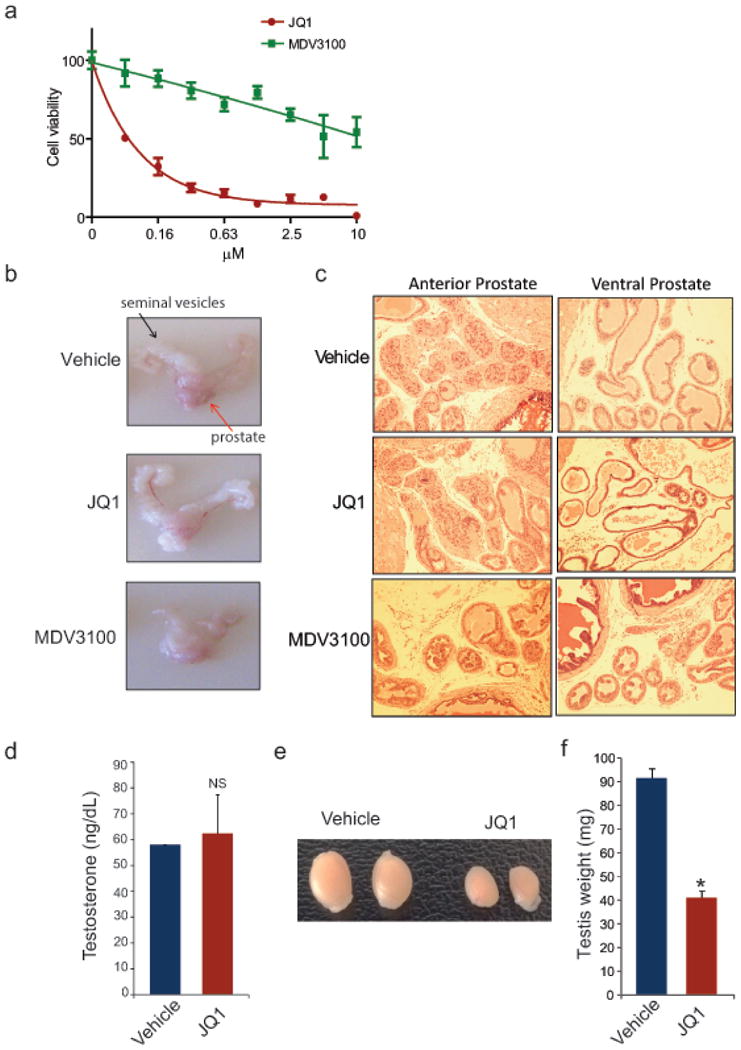Extended Data Figure 9. JQ1 does not affect normal prostate growth and testosterone levels but reduces testis size in mice.

a, Comparison of JQ1 and MDV3100 treatment on VCaP cell viability in vitro. N=8 wells of a 96 well plate per condition. VCaP cells were treated with MDV3100 or JQ1 for 8 days and assayed for viability with Cell-titerGLO. b, Gross images showing highly hormone-responsive seminal vesicles (s.v.) attached to prostate gland (red and black arrows respectively) from male mice treated for 30 days with vehicle, JQ1 (50mg/kg) or MDV3100 (10mg/kg). Vehicle or JQ1-treated mice show no change in the appearance of seminal vesicles. By contrast, MDV3100-treated animals display remarkable shrinkage of seminal vesicles. c, Mice treated with JQ1 do not show any adverse changes to anterior or ventral prostate morphology. The H&E images show normal morphology of anterior and ventral prostate from vehicle or JQ1-treated mice. MDV3100-treated mice display attenuated remnant glands of anterior or ventral prostate. d, Male mice (n =3 per group) treated with vehicle or JQ1 for 30 days exhibit similar serum testosterone levels. Data represents the mean ± S.E. e, Gross analysis of testis from mice treated with vehicle or JQ1 for 30 days. f, Testis weight from vehicle control or JQ1-treated mice. Data represents the mean ± S.E. from n=7 mice per group. NS, not significant; *P ≤ 0.0001 by two-tailed Student's t-test.
